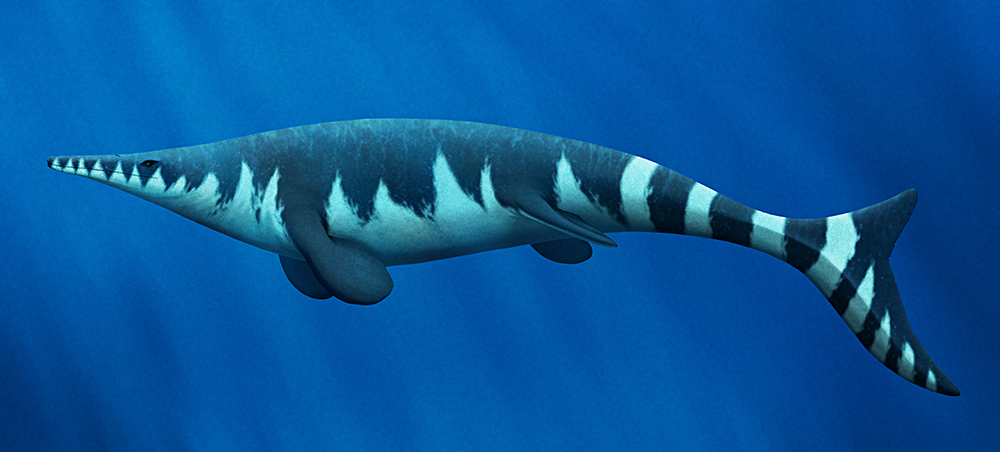During the late Cretaceous period, about 72-66 million years ago, the Oulad Abdoun Basin region of Morocco was submerged under the Atlantic ocean – and the water above it was absolutely teeming with mosasaurs.
Fossils of at least a dozen different species of these predatory marine reptiles have been found in the area, and they seem to have all been occupying different ecological roles to avoid being in direct competition with each other. Many had conical piercing teeth adapted for gripping onto slippery soft-bodied prey, but others had rounded blunt teeth for crushing hard shells, and some even had sharp shark-like teeth for tearing flesh.
And one of the most surprising recent discoveries from this diverse ecosystem was Gavialimimus almaghribensis.
This 7m long (23′) mosasaur was part of the plioplatecarpine lineage, but it had uniquely long and narrow jaws with pointy interlocking teeth and highly retracted nostrils. Its snout shape resembled that of a crocodilians like modern gharials more than any of its short-skulled close relatives, and it was probably specialized for a similar diet of small fast-moving fish.

